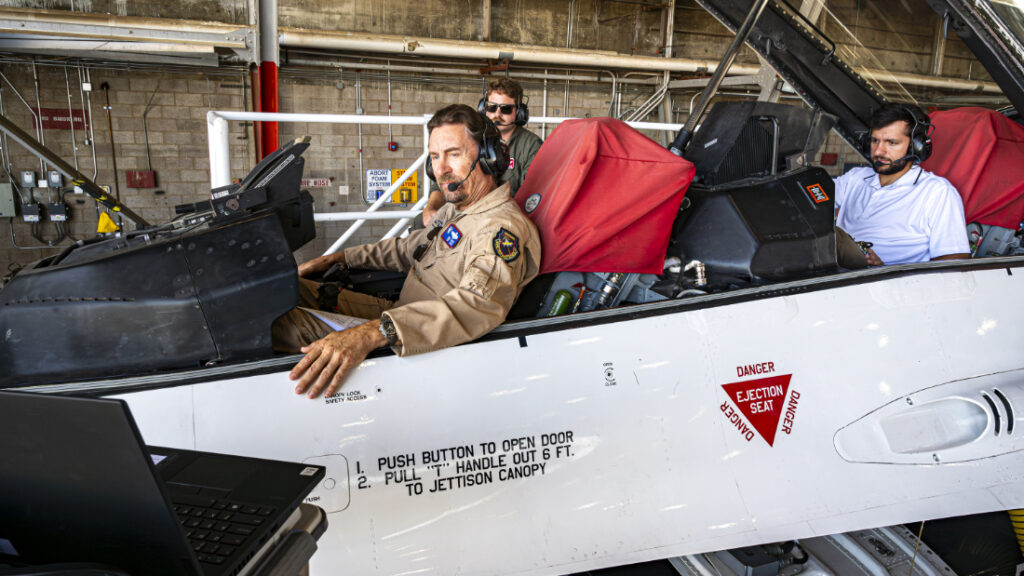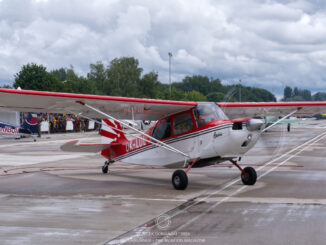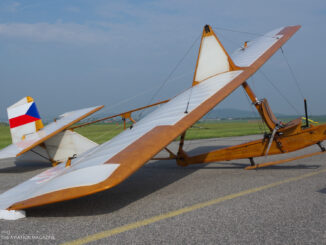 The US Air Force Test Pilot School and the Defense Advanced Research Projects Agency (DARPA) became finalists for the 2023 Robert J. Collier Trophy, an annual aviation award administered by the US National Aeronautic Association (NAA), honouring the greatest achievements in aeronautics and astronautics in the United States.
The US Air Force Test Pilot School and the Defense Advanced Research Projects Agency (DARPA) became finalists for the 2023 Robert J. Collier Trophy, an annual aviation award administered by the US National Aeronautic Association (NAA), honouring the greatest achievements in aeronautics and astronautics in the United States.
The Collier Trophy was established by Robert J. Collier, publisher of the Collier´s Weekly magazine and president of the Aero Club of America. The award, officially designated the Aero Club of America Trophy, was for the first time granted in 1911 to Glenn H. Curtiss, in recognition of his hydroplane development.
In the following years, awarding the trophy became an annual tradition that endured until today. There was only one short gap between 1917 and 1920, caused by the Great War and then Collier´s death. In 1922, the award was taken over by the NAA and renamed to Robert J. Collier Trophy to honour its founder.
In February of 2024, the NAA announced four finalists competing for the 2023 edition of the trophy:
- MagniX for magni650 Electric Propulsion Unit (EPU),
- NASA, University of Arizona, and Lockheed Martin for the OSIRIS-REx Team,
- Reliable Robotics for Advanced Autonomous Flight Systems,
- USAF/DARPA for the X-62A ACE Team
Although the list of finalists was announced two months ago, details about the nomination of the USAF/DARPA team were disclosed only a few days ago.
The USAF Test Pilot School and DARPA were recognized for their recent breakthroughs in machine-learning era within the aerospace industry. Both institutions worked together to test artificial intelligence algorithms in X-62A VISTA aircraft, within the DARPA’s Air Combat Evolution (ACE) programme.

In less than a calendar year the teams went from the initial installation of live artificial intelligence (AI) agents into the X-62A systems, to demonstrate the first AI versus human within-visual-range engagements, otherwise known as a dogfight. In total, the team made over 100,000 lines of flight-critical software changes across 21 test flights. Then, the AI paired the X-62A VISTA against manned F-16 aircraft in the skies above the Edwards air force base.
´The X-62A is an incredible platform, not just for research and advancing the state of tests, but also for preparing the next generation of test leaders. When ensuring the capability in front of them is safe, efficient, effective and responsible, industry can look to the results of what the X-62A ACE team has done as a paradigm shift. We’ve fundamentally changed the conversation by showing this can be executed safely and responsibly,´ said Col. James Valpiani, commandant of the Test Pilot School.
Until now, the machine learning was prohibited due to high risk and lack of independent control. The recent breakthrough achievement of the ACE team means the first step towards more advanced use of non-deterministic AI and opens doors for a variety of new research programmes.
Although fully controlled by the AI, the X-62A is still flown with so-called ´safety pilot´ onboard. The pilot has an ability to disengage the AI at any time. However, as stated by the US Department of Defence in its official announcement, the safety switch was not activated at any point during the dogfight programme.
´The potential for autonomous air-to-air combat has been imaginable for decades, but the reality has remained a distant dream up until now. In 2023, the X-62A broke one of the most significant barriers in combat aviation. This is a transformational moment, all made possible by breakthrough accomplishments of the X-62A ACE team,´ said Secretary of the Air Force Frank Kendall.

Secretary Kendall will soon take flight in the X-62A VISTA to personally witness the AI capabilities in a simulated combat environment during a forthcoming test flight at Edwards.
The General Dynamics NF-16D VISTA experimental aircraft was built in the early 1990s. The jet is based on F-16D Block 30 of the Israeli Air Force variant. Its name is an abbreviation from Variable Stability In-flight Simulator Test Aircraft. The NF-16D performed its maiden flight in April of 1992.
In 2021, significant upgrades were performed on the aircraft as part of Skyborg programme. They included implementation of System for Autonomous Control of Simulation (SACS). In addition, the aeroplane received its current designation X-62A.
The ACE programme is a result of collaboration between academia, government, and private industry. Government partners include the Air Force Test Center, Air Force Research Laboratory, DARPA and the Air Force Test Pilot School. Academic partners include Johns Hopkins University and MIT’s Computer Science and Artificial Intelligence Laboratory. Industry partners on ACE include Calspan Corporation, Cubic Corporation, EpiSci, Lockheed Martin Skunk Works and Shield AI.
Eventually, the 2023 edition of the Robert J. Collier Trophy was won by NASA and the OSIRIS-Rex team, for the first US mission to collect a sample from an asteroid and deliver it back to Earth. The official celebration and awarding the trophy is planned for 13th June 2024.

Cover photo: The X-62 Variable In-Flight SimulatorTest Aircraft flies in the skies over Edwards Air Force Base, California, Aug. 26, 2022. (USAF photo by Kyle Brasier, cropped).
All photos and quotations © U.S. Department of Defence (DoD). DoD information materials were used, in compliance with Public Domain licence. The appearance of U.S. Department of Defense (DoD) visual information does not imply or constitute DoD endorsement.



